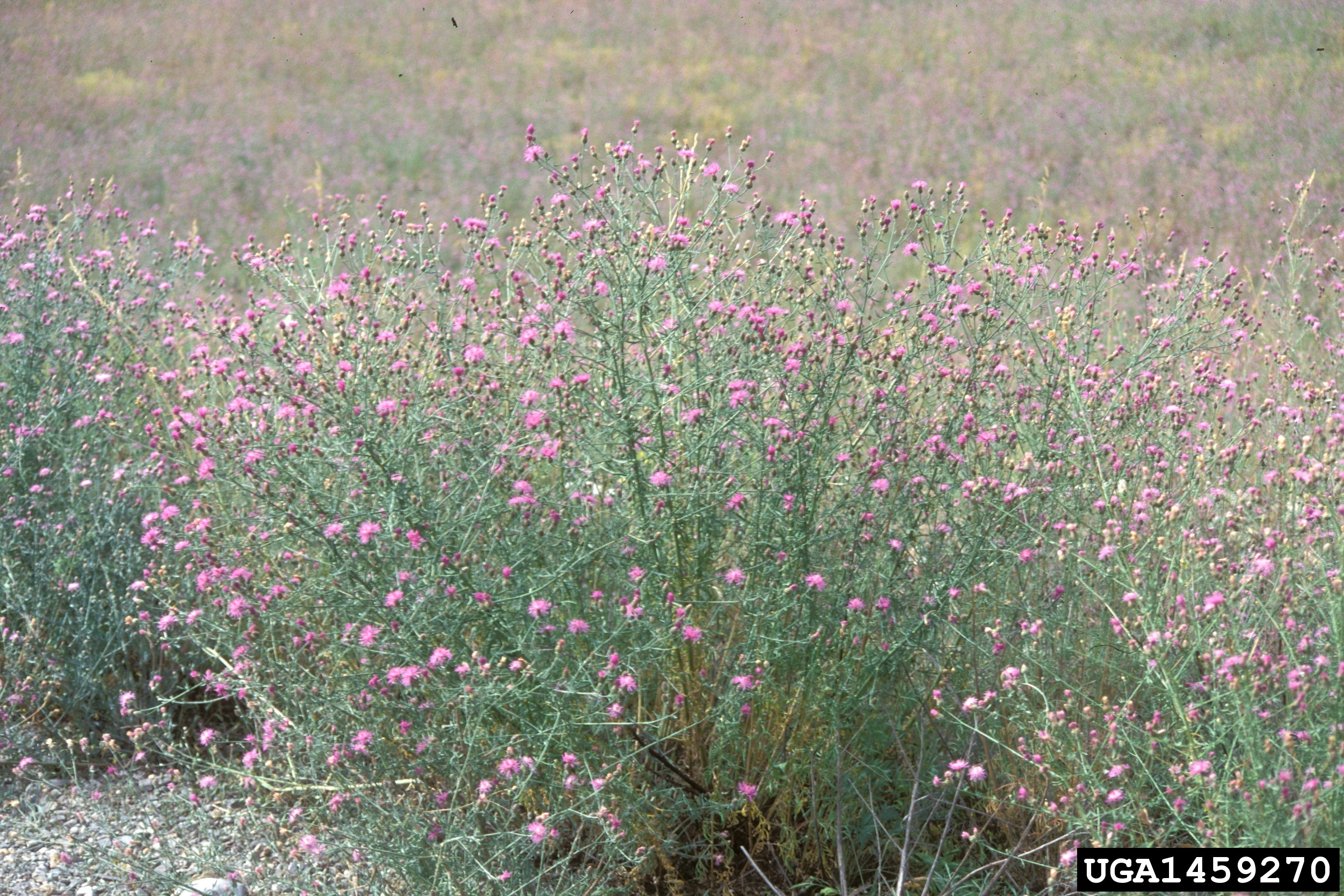
Xplor reconnects kids to nature and helps them find adventure in their own backyard. Free to residents of Missouri.


































Stay in Touch with MDC news, newsletters, events, and manage your subscription

Xplor reconnects kids to nature and helps them find adventure in their own backyard. Free to residents of Missouri.

A monthly publication about conservation in Missouri. Started in 1938, the printed magazine is free to residents of Missouri.






Written by Tim Banek, MDC Invasive Species Coordinator
JEFFERSON CITY Mo. -- Invasive plant species threaten the stability of ecosystems by reducing biological diversity and replacing beneficial native species. Overall, invasive species are the second largest threat to Missouri’s native plants and animals behind habitat destruction. However, they can be the primary threat in local instances.
One of Missouri’s worst invaders is spotted knapweed (Centaurea stoebe micranthos), a plant species native to Europe and western Asia. Spotted knapweed has invaded millions of acres of pastures, fields, prairies and roadsides in 45 states since it was accidentally introduced in the United States through contaminated alfalfa and clover seed in the late 1800s. Spotted knapweed was first recorded in Missouri in 1933 and has expanded its range considerably in the last few decades.
The weed is “allelopathic,” which means it produces chemicals that inhibit other plant growth. This allows it to spread more quickly, forming monocultures that can span vast acreages. Spotted knapweed is a short-lived perennial that reproduces solely from seed. It is a prolific seed producer with 1,000 or more seeds produced annually per plant. The seeds can remain viable in the soil for up to eight years.
Spotted knapweed out-competes native vegetation to create a monoculture that does not favor livestock or wildlife. Forage for livestock and wildlife is reduced both by the loss of existing forage and by the low palatability of spotted knapweed to livestock and wildlife. This monoculture also promotes soil erosion, resulting in sedimentation in surrounding streams that harms aquatic plants and animals.
For these reasons, along with the expanding populations of the invasive weed across the state, the Missouri Legislature designated spotted knapweed a noxious weed during the 2008 general session.
The first line of defense is identification. Look for spindly weeds that look like chicory or wild lettuce, but with pink flowers. Spotted knapweed flowers look like miniature thistle flowers. Because the seeds can spread through flowing water and through the movement of hay and gravel in addition to its natural disbursement, it’s found almost everywhere, but especially along major roadways.
To prevent spotted knapweed from starting on their properties, landowners should be careful about the origin of hay, gravel and plant materials, as well as the vehicles and equipment that move these items to their properties. Spotted knapweed seed can easily be transported in a number of ways. Those operating mowers, ATVs and other vehicles should avoid knapweed plants after they have produced seed and clean their vehicles and equipment after operating them in areas with the potential to contain invasive plant seed.
While spotted knapweed is already established in approximately 40% of the state, landowners who recognize knapweed early and control it before it is established can be successful in preventing spotted knapweed from invading their properties.
Pulling plants and herbicide treatments can be successful for spotted knapweed control, but are not feasible when dealing with large stands. Milestone, Perspective and Streamline are all effective herbicides to kill spotted knapweed. They have a residual effect, which means they will kill new seedlings of knapweed as they germinate for six months to possibly up to two years. These herbicides kill only broad-leaved plants without harming grass.
The Missouri Department of Conservation (MDC) has partnered with the Missouri Department of Transportation (MoDOT) to aggressively attack the issue of spotted knapweed by spraying herbicides along major highways.
One strategy for non-chemical control of spotted knapweed is biocontrol using varying combinations of insects. MDC and MoDOT have partnered with the Missouri Department of Agriculture and the Missouri Extension Service to purchase and release insects that use knapweed as a specific host. One beetle attacks the root and the other consumes knapweed seeds. The insects are two of 13 species tested on native plants and approved by the United States Department of Agriculture. These insects have been effective in other states with no known non-target effects. MDC is evaluating insect releases at three sites in southern Missouri, and is piloting a cost-share program for private landowners in Texas and Wright counties.
For more information on spotted knapweed, visit mdc.mo.gov.